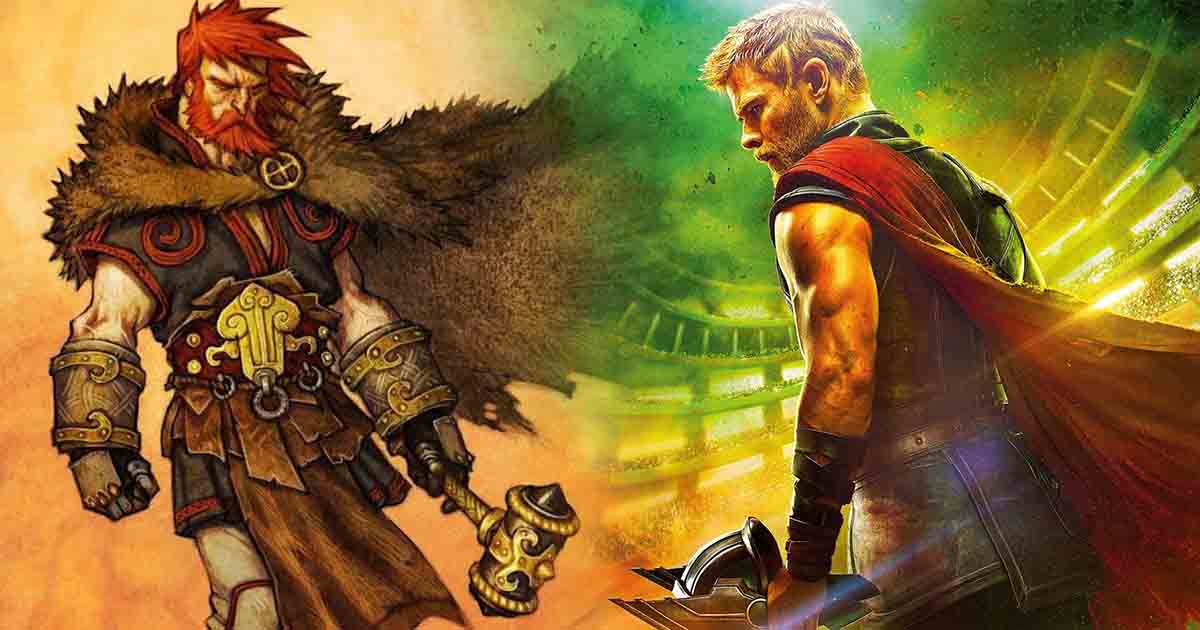In the era of the Marvel Cinematic Universe, there's no ancient deity more famous than Thor - Asgardian, Avenger, and God of Thunder. Actual Norsemen of antiquity, however, might be annoyed if they knew how little the Marvel version of the character resembles the genuine God of Thunder. Though not every retelling of the Prose Edda and Poetic Edda agree about the details of the Odinson's life, they do make it clear that Jack Kirby and Stan Lee took several liberties when lifting their superheroic creation from Scandinavian lore.
It's true that the popularity of Thor in the pages of Marvel Comics, and later the MCU, has increased global awareness of all Norse gods and myths, but unless one is willing to consult the original texts, they're not going to get the whole picture. After all, there are some pretty strange tales of Thor and the rest of the Aesir out there to peruse - and they sure don't look much like any of the adventures that have made it to the big screen thus far.
Thor Is Not Just The God Of Thunder

Everyone knows Thor is the God of Thunder - in fact, him realizing the implications of that role is one of his most important character arcs in Thor: Ragnarok. And as far as fans of the MCU are concerned, thunder is the only thing he's the god of.
The Thor that hails from the annals of Norse mythology, on the other hand, serves many more functions beyond the creation of lightning and thunder. He's also the god of the tides, fair weather, and good crops - and invoking his name could bring victory on the battlefield, protection from disease, and even fertility. Curiously, Thor is also listed as being the god of oak trees, and most shrines to him were constructed with oak wood.
Thor Is a Redhead

The Thor of antiquity was usually described as having the red hair emblematic of famous Vikings like Erik the Red, and with a long and unkempt beard. One story does reference Thor's blond hair, but that's believed to be a result of the Christian themes that started to bleed into Norse mythology via authors like Snorri Sturluson in the 13th century.
Loki Is Not Thor's Brother - He Is Odin's 'Blood Brother’

In the Marvel comics, no other character is more closely associated with Thor than Loki, his adopted brother and frequent adversary. The lore of Marvel Comics states that Loki was taken as a child from the Frost Giant Laufey by Odin and raised in Asgard alongside Odin's natural-born son. That only works for Marvel.
There's no reference to a familial relation between Thor and Loki in any of the foundational texts of Norse mythology. The two are friends that frequently travel together, but that's only after meeting sometime later in life through Loki's association with Odin. They certainly didn't grow up together. Loki was indeed born to a giant known as Laufey, but he was not adopted by Odin - the two were just allies. In the Poetic Edda, there's one singular mention of Loki and Odin being blood brothers, but that's as familial as the God of Mischief gets with the royal family of Asgard.
Loki has a complicated relationship with Thor, often depicted as the "bad guy" of Norse mythology, but he's far from a supervillain in the original telling. Though he frequently frustrates the gods with his mischievous nature, he's the only non-Aesir to be invited to live in Asgard alongside them - so they must enjoy his company. In fact, Loki uses his trickery for good more often than he uses it for evil.
With that being said, the relationship is still fairly complicated. Though Loki is particularly close with Thor, his traveling companion, and Odin, his blood brother, he did also cause the demise of one of Odin's other sons, Balder. For that offense, he was supposedly sentenced to an eternity of being lashed to a rock while a snake's venom dripped onto his face - until he was freed at Ragnarok to take his revenge on Asgard.
Up until that point, however, he was more of a nuisance than a true antagonist.
You Don't Have To Be Worthy To Wield Mjölnir

If there’s one trait that defines Thor in both Marvel Comics and the MCU, it's worthiness. In order to wield the mighty hammer Mjölnir, one must prove oneself worthy of the power of Thor - and the list of individuals to have qualified is not very long. Even the God of Thunder himself struggled for a millennium before he had what it takes.
The Mjölnir (or Mjöllnir) of antiquity, however, had no such requirements. It was indeed a magic mallet, but anyone could pick it up - though actually using it involved skill and some additional equipment. On at least one occasion, Thor had his hammer taken by a giant, which is not something the MCU version has ever had to worry about. To be fair, the real Mjölnir did also come with some additional abilities - like the power to shrink down and fit inside Thor's pocket.
Mjölnir Is Only One Piece In Thor's Ensemble Of Magical Accessories

In order to properly wield Mjölnir and have it return to his hand when he threw it, Thor had to wear a special pair of gloves called Jarnglofar, or “iron grippers”, since the size of Mjölnir’s handle was too short - courtesy of Loki.
To reach his peak effectiveness as a protector god, Thor also had to strap on a mystical belt known as Megingjörd, which was said to double his strength. It's an item that was briefly referenced by Happy Hogan in Spider-Man: Homecoming, but only as a throwaway gag.
Do not miss next week, when we will return with the final part and some facts that very few know about the Mighty Thor!












